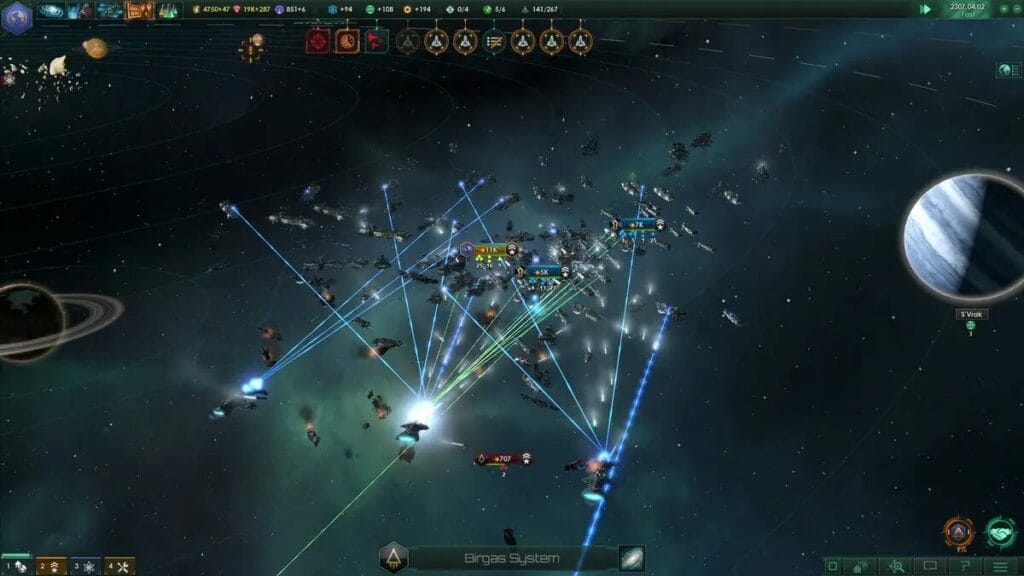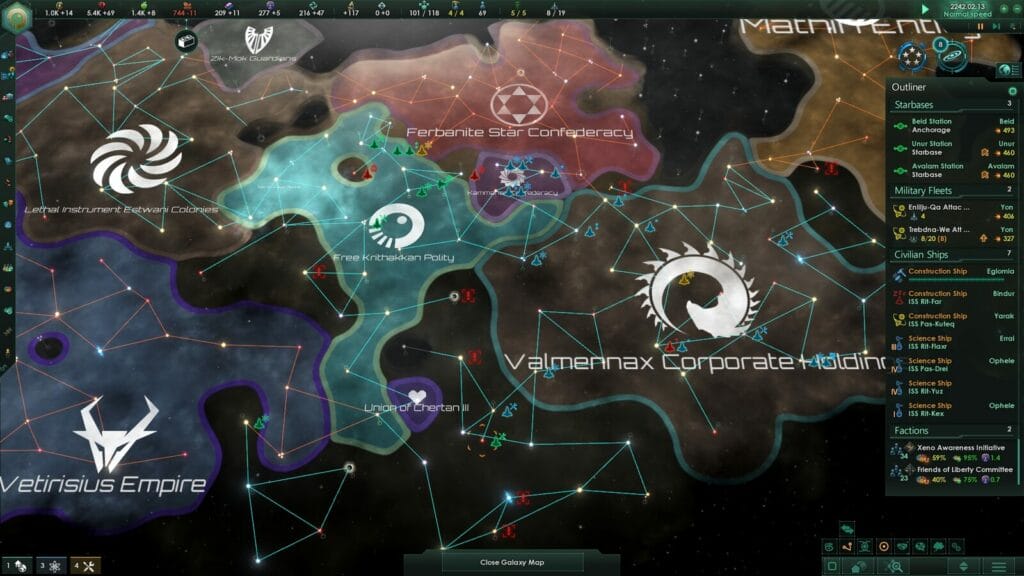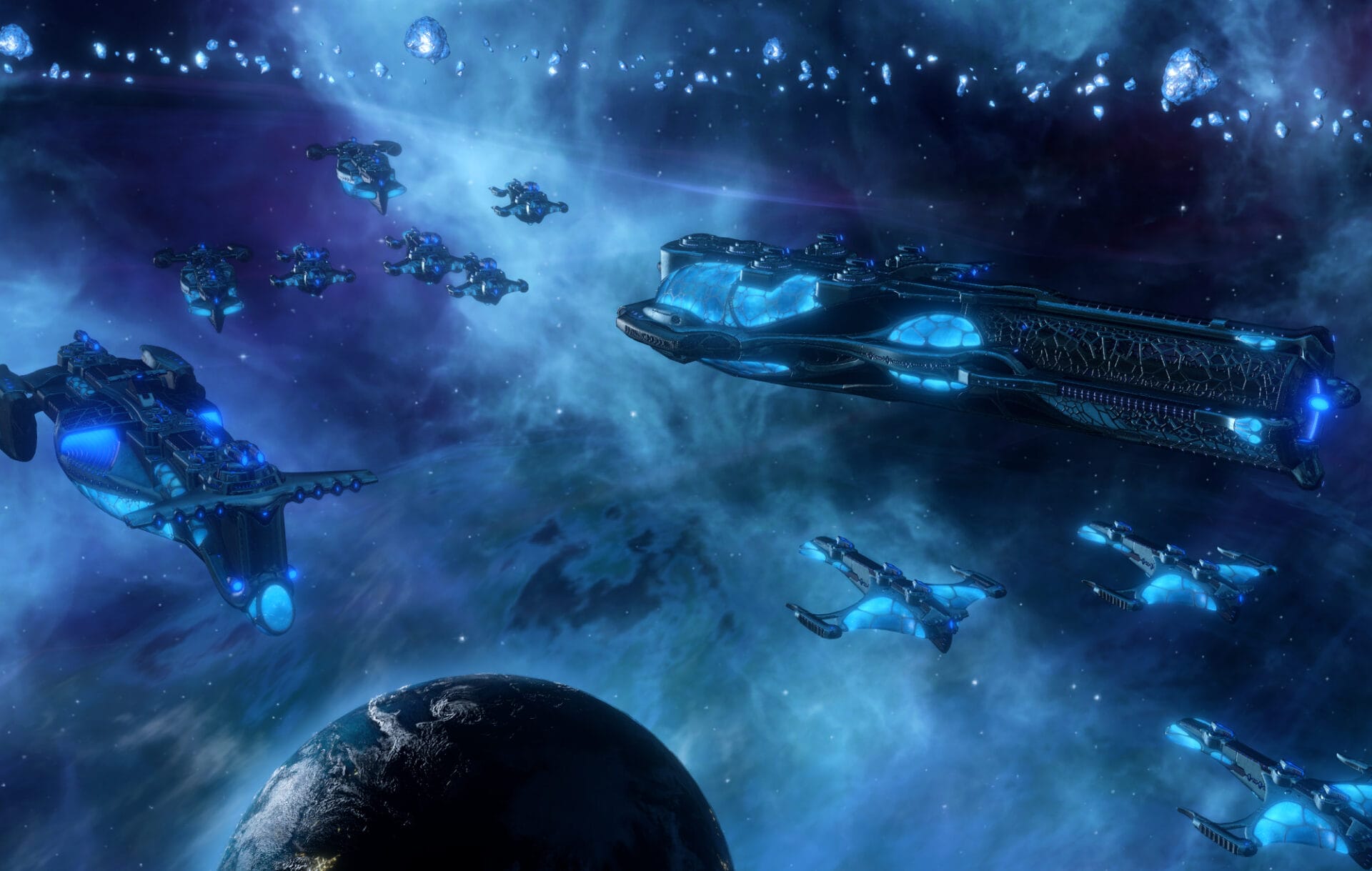Stellaris is a grand strategy game developed by Paradox Interactive, released on May 9, 2016. It has gained significant acclaim for its complex and immersive gameplay, set in a vast and procedurally generated galaxy. Here’s an expanded look at the key aspects of Stellaris:

Gameplay
1. Galaxy Generation and Exploration
- Procedural Generation: Each game begins with a unique, procedurally generated galaxy, with thousands of star systems, planets, moons, and anomalies to explore.
- Exploration: Players send science ships to explore unknown star systems, survey planets, and discover resources, anomalies, and potentially new species.
2. Empire Management
- Empire Creation: Players can create custom empires, choosing their species, ethics, government types, and traits, which influence their playstyle and interactions with other empires.
- Economy and Resources: Managing resources like energy credits, minerals, food, consumer goods, alloys, and strategic resources is crucial for empire growth and stability.
- Population Management: Balancing the needs and happiness of the population, managing different species, and integrating conquered or integrated aliens are key tasks.
3. Diplomacy and Politics
- Inter-Empire Relations: Players engage in diplomacy, forming alliances, non-aggression pacts, defensive pacts, and federations, or declaring rivalry and war.
- Galactic Community: A United Nations-like body where empires vote on resolutions that can affect the entire galaxy, adding a layer of interstellar politics.
4. Military and Warfare
- Fleet Management: Building and upgrading fleets with different ship classes, weapons, and technologies.
- Ground Combat: Invasions of planets using armies, which can include diverse units from different species within the empire.
- Strategic Warfare: Planning and executing wars, managing war exhaustion, and negotiating peace deals.
5. Research and Technology
- Technological Advancement: Researching new technologies in three branches: Physics, Society, and Engineering, leading to advancements in various aspects of the empire.
- Traditions and Ascension Perks: Unlocking traditions provides bonuses and perks, allowing for specialization in different areas like diplomacy, expansion, and warfare.

Expansions and Updates
Stellaris has received numerous expansions and updates, each adding new content and mechanics to the game:
1. Utopia (2017)
- Megastructures: Dyson Spheres, Ringworlds, and other colossal structures.
- Ascension Paths: Genetic, synthetic, and psionic evolution paths for species.
- Unity and Traditions: A new resource (Unity) and tradition trees for empire specialization.
2. Apocalypse (2018)
- Colossus Ships: Planet-destroying superweapons.
- Marauder Empires: Nomadic space-faring factions that can be hired as mercenaries.
- Unity Ambitions: Powerful, temporary empire-wide bonuses.
3. Megacorp (2018)
- Corporate Empires: New government type focused on commerce and trade.
- Ecumenopolis: Planet-wide city worlds.
- Branch Offices: Establishing business branches on other empires’ worlds.
4. Federations (2020)
- Enhanced Federations: Different types of federations with unique benefits.
- Galactic Community: Interstellar senate with resolutions and laws.
- Origins: Unique starting conditions and backstories for empires.
5. Nemesis (2021)
- Crisis Role: Players can become the endgame crisis, gaining powers to challenge the galaxy.
- Espionage System: New mechanics for intelligence gathering and covert operations.
- Custodian: Players can become the defender of the galaxy.
Community and Modding
1. Active Community
- Forums and Discussions: A robust community on Paradox forums and other platforms discussing strategies, sharing stories, and collaborating.
- Player Guides: Extensive guides and tutorials created by the community to help new players.
2. Modding Support
- Steam Workshop: A vast array of mods available, from simple tweaks to complete overhauls, including new species, ships, technologies, and even total conversions.
- Customization: The game’s design allows for extensive modding, enhancing replayability and player creativity.
Have you played Stellaris? What’s your favourite Part of Stellaris? We’d love to hear from you.
Other things you might want to know:
How long does a game of Stellaris take?
Anywhere from a few hours to 30 hours long for a main objective game.
Why is Stellaris so popular?
It brings a deep complex playstyle with the setting of a massive galaxy.
What is the point of Stellaris?
Each game begins with a unique, procedurally generated galaxy, with thousands of star systems, planets, moons, and anomalies to explore.
Players send science ships to explore unknown star systems, survey planets, and discover resources, anomalies, and potentially new species.
Check out other articles by month:







